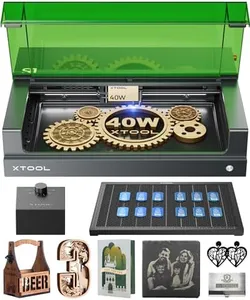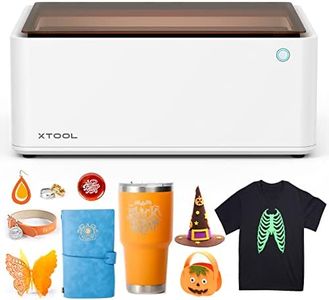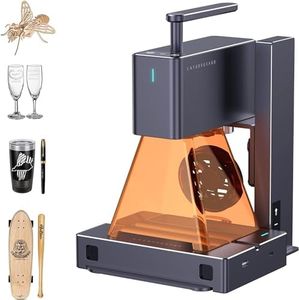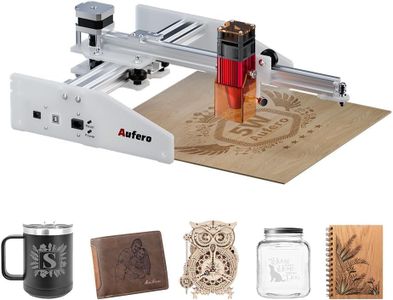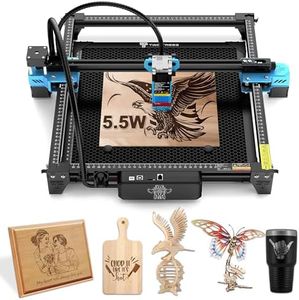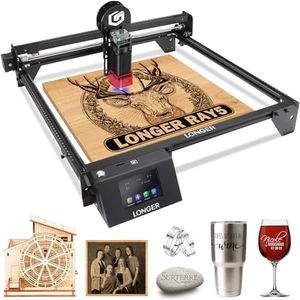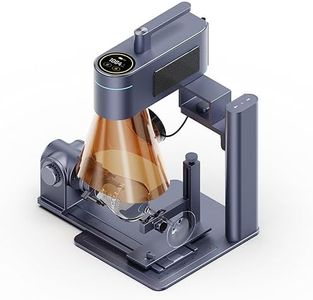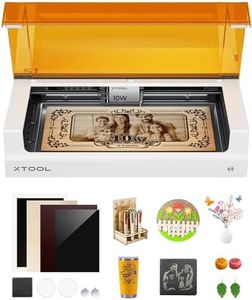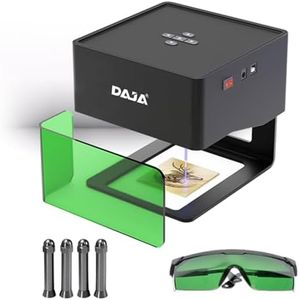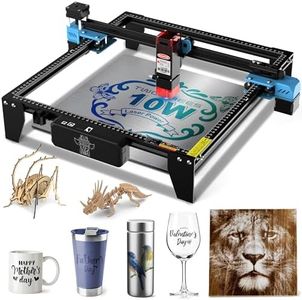We Use CookiesWe use cookies to enhance the security, performance,
functionality and for analytical and promotional activities. By continuing to browse this site you
are agreeing to our privacy policy
10 Best Laser Engravers For Wood
From leading brands and best sellers available on the web.Buying Guide for the Best Laser Engravers For Wood
Choosing a laser engraver for wood is an exciting process because these machines can turn your ideas into beautiful creations. The right engraver will depend on what you want to make, how precise you want your designs to be, how much space you have, and how much experience you have with these tools. It's important to look at a few key specifications so you can find a model that matches the kind of work you plan to do, whether that's small crafts, business projects, or larger, artistic pieces.Laser Power (Wattage)Laser power, measured in watts, determines how deeply and quickly you can engrave or cut through wood. Lower wattages, like 5-10W, are suitable for surface etching, fine detail, and thin wood pieces. Medium power, such as 15-40W, can handle thicker materials and faster work, making them ideal for hobbyists with various projects. High-powered lasers, above 40W, are typically used for deep cuts or heavy-duty use, often by pros or for commercial work. Think about whether you mostly want to etch beautiful images on the surface or need to cut through wood when deciding on the right power.
Engraving Area (Workbed Size)The engraving area is the physical size of the workspace where the laser can move and work. A smaller work area (under 300 x 300 mm) will handle small items like coasters, jewelry, and tags. Medium sizes (between 300 x 300 mm and 600 x 400 mm) allow more flexibility for larger projects such as signs or boxes. Large work areas (above 600 x 400 mm) are good if you plan to engrave or cut big pieces or want to engrave multiple items at once. Consider the biggest item you want to work on regularly and choose a workbed that can accommodate that.
Compatible MaterialsWhile most laser engravers for wood can also handle materials like leather, acrylic, or paper, not all can do it equally well. Some machines are fine-tuned for wood, while others handle mixed materials better. If you think you may want to experiment beyond wood, check that the machine can safely and effectively engrave or cut the other materials you're interested in, but if wood is your main focus, prioritize machines optimized for it.
Laser Type (Diode, CO2, Fiber)Laser engravers come in several types, mainly diode and CO2 for wood. Diode lasers are compact, affordable, and great for lighter engraving tasks and beginners, though they're not as powerful and can't cut thick wood well. CO2 lasers are more powerful and versatile, able to cut and engrave thicker and harder woods quickly, making them suitable for dedicated hobbyists and business use. Fiber lasers are rare for woodwork and usually more industrial. Your main tasks—simple designs or business-grade cutting—should guide your choice.
Software CompatibilityThe software controls your designs and how the laser operates. Some engravers come with built-in or bundled software that's easy to use and ideal for beginners, while others support advanced software that offers more options and flexibility. Check that the software fits your comfort level and works with your computer or device. If you want to do more complicated designs or use industry-standard file formats, look for machines compatible with popular third-party programs.
Safety FeaturesLaser engravers use concentrated light that can be dangerous. Good safety features like protective covers, automatic shut-off, emergency stop buttons, and proper ventilation improve safety. Beginners especially should look for machines with clear safety systems. If the engraver will be used where children or pets might be nearby, or if you want extra peace of mind, prioritize comprehensive safety features.
